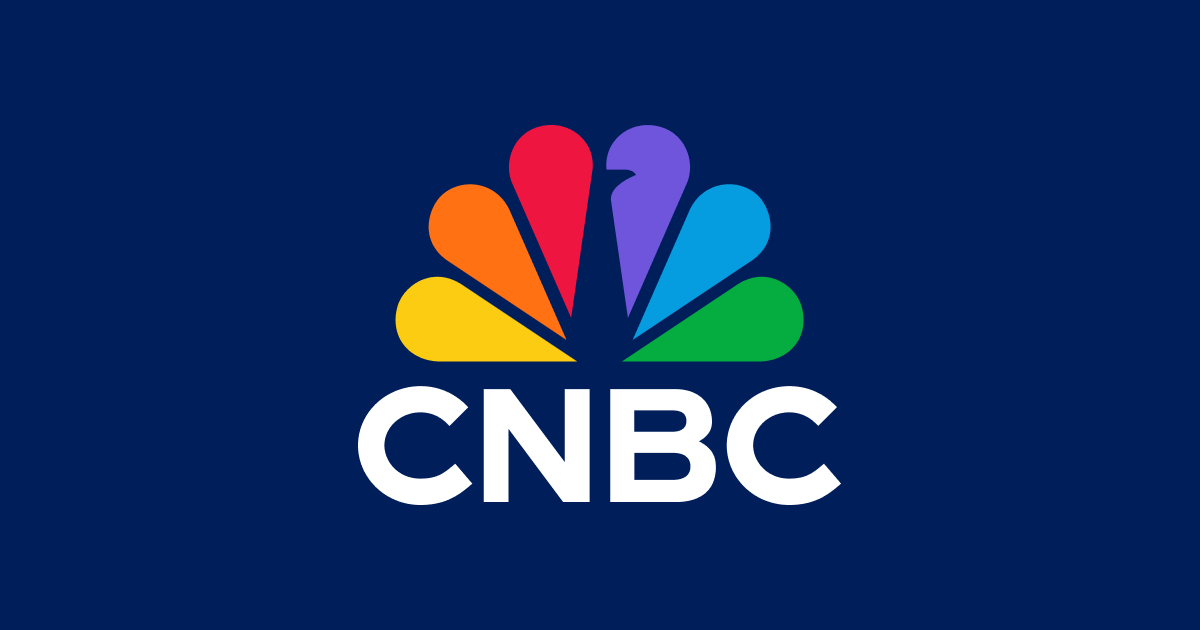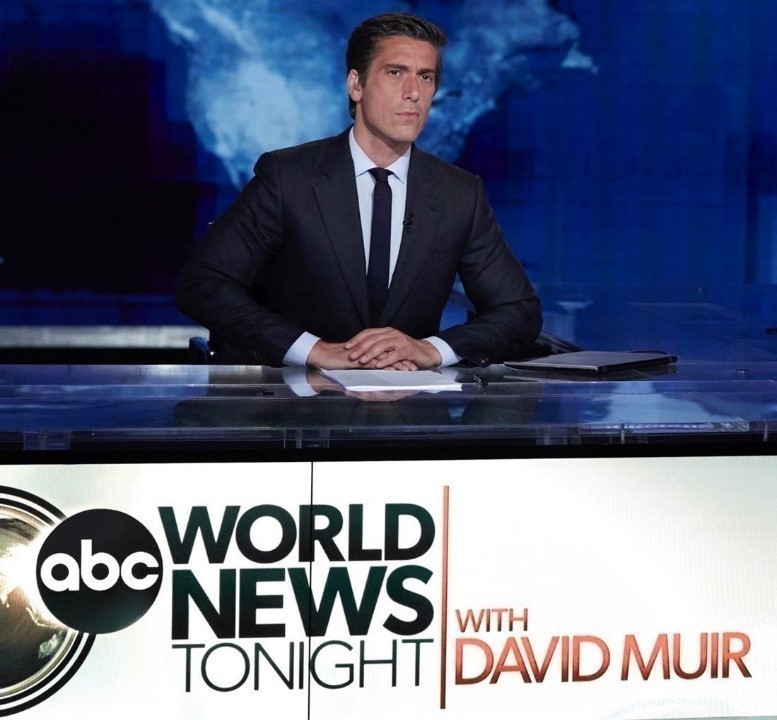WHEN: Today, Friday, April 12, 2024
WHERE: CNBC’s “Squawk on the Street”
Following is the unofficial transcript of a CNBC exclusive interview with Nike CEO John Donahoe on CNBC’s “Squawk on the Street” (M-F, 9AM-11AM ET) today, Friday, April 12. Following is a link to video on CNBC.com: https://www.cnbc.com/video/2024/04/12/nike-ceo-john-donahoe-on-2024-olympics-and-launching-fastest-shoe-in-the-world.html.
All references must be sourced to CNBC.
SARA EISEN: John Donahoe joins me now to discuss his outlook for the Summer Games and the company as a whole. John, welcome. Good to see you in Paris this morning.
JOHN DONAHOE: Great to see you, Sara.
EISEN: So tell us what’s new and different about this Olympics unveil?
DONAHOE: Well, as you mentioned, I’m here in Paris and we’re in this very venue last night. We unveiled a major multi-year innovation cycle, and we did it in a way only Nike can, with the world’s greatest athletes on what is the biggest stage in sport, the Summer Games. And I’ll tell you, I wish you could have been here, Sara, because it was remarkable. We had 40 of the greatest athletes in the world, ranging from four-time medalist Eliud Kipchoge, Sha’Carri Richardson, A’ja Wilson was here, longtime legends Serena Williams, Dawn Staley. And they were showcasing an unprecedented array of disruptive innovation from Nike. They were actually the models in the show. And that just portends what’s coming this summer on the track, on the court, on the pitch in the Summer Olympics.
EISEN: I wish I could have been there too because it was Paris in part. But John, how do you — how do you take this momentum and use it to reignite growth on a bigger scale in mass market?
DONAHOE: Well, what Nike’s always done, Sara, is take bold moments of disruptive innovation, combine them with major moments in sport, and then use that as a launching pad for delivering that same innovation to consumers. So an example would be, we are launching the fastest shoe in the world, the Alphafly 3, the super shoe. It’s broke the marathon record, world record last year. It is in incredible demand. It will be on the shoe — on the feet of many marathoners this summer. That’s for the elite runner. At the same time, we’re cascading that same disruptive technology down for everyday runners. So we’ll be launching the Peg 41 early in the summer for consumers, our most significant advancement in the Pegasus yet. And we’ll be announcing and launching a disruptive shoe for everyday runners in the Pegasus Premium, which is the first time we’ve taken full-length Zoom Air and put it in a shoe that delivers great performance and comfort and cushioning for consumers, which is what they want. So our experience has been, when we launch these big moments in sport, we then cascade them down to consumers all over the world.
EISEN: And some investors do see the Olympics as a catalyst for you. I wonder how much of a sales bump you anticipate from the games themselves, and then how sustainable that is to future quarters?
DONAHOE: Well, the way, Sara, we think about innovation is it’s got to come season after season after season. And that’s why we’re so excited about this multi-year innovation cycle. It’s not just one product or one platform. It’s going to be continuous. So we started two weeks ago by launching the Air Max DN, our most innovative Air Max in years. It’s got dynamic air technology. It’s a lifestyle shoe that’s been very well-received worldwide. Then this spring, we’ll be launching, as I mentioned, the Peg 41. Through the Euro Champs, we’ll be launching our most advanced football kits or soccer kits in the U.S., football. Then into the fall, the Olympics and on. So the way we drive our growth is have that innovation coming season after season after season. And that’s what — that’s what drives our growth over time.
EISEN: So why has that not been happening, John? Because you — you mentioned on a recent earnings call that there’s — there’s been a lack of newness, and that’s what investors have been concerned about. So what — what happened that you’re doing differently now?
DONAHOE: Yeah, well, there’s — I’ll just reiterate. There’s a huge amount of innovation going on right now at Nike, Sara, in this multi-year pipeline. The innovation engine is running at full speed. And over the last four years, we’ve grown. We’ve grown from $39 billion to $52 billion last year, $39 billion in 2019 to $52. So we’ve been growing at a 9 percent growth rate on a constant currency basis over the last four years. So growth hasn’t been the issue. What’s driven that growth is what I would characterize as iterative innovation. So we still have the best basketball shoes in the world, launching new shoes like the Sabrina 1 or the Book 1, the best football shoes, the best — the best fitness, and the best iterative innovation in lifestyle. And that’s what’s driven our growth. But what’s been missing is the kind of bold, disruptive innovation that Nike’s known for. And when we look back, the reasons are fairly straightforward. I think Lorraine mentioned this yesterday, but our industry has gone through an awful lot of operational challenges with supply chain. All the footwear factories in Vietnam closed for 12 weeks a couple of years ago, so 25 percent of the world’s sneakers didn’t get made. And so we were navigating through that. But even more importantly, our employees were working from home for two and a half years. And in hindsight, it turns out it’s really hard to do bold, disruptive innovation to — to develop a boldly disruptive shoe on Zoom. And so our teams came back together 18 months ago in person, and we recognized this. And so we realigned our company. And over the last year, we have been ruthlessly focused on rebuilding our disruptive innovation pipeline along with our iteration — iterative innovation pipeline. So the pipeline’s as strong as ever. And we’re — we’re going into the period where we’ll start seeing season after season, great innovative product from Nike, along with the kind of storytelling we’re known for. And that’s why we’ll drive growth.
EISEN: Is that why brands like Hoka and On were able to capture market share specifically in running, which is such a core category for you? And — and what do you expect going forward there?
DONAHOE: Well, as you know, Nike was founded as a running company.
EISEN: Yeah.
DONAHOE: And we’ve done more to advance running than any brand in the world over the last 50 years. And we continue to lead with elite runners. But innovation has always been what’s marked Nike in running, as in other categories. And so we’re not just going to copy what other people do. We’re going to bring innovation, the kind of disruptive innovation I mentioned a minute ago, with updating the entire Pegasus family, the Peg Premium, the Vomero. So we’ll be bringing new, fresh, bold innovation to running. And we’ll be getting back to where the runners are, the everyday runners are, in the local races, the marathons, at the retail running shops. And so our innovative product, plus our presence in the running communities, what will drive our continued leadership in running.
EISEN: You mentioned Lorraine Hutchinson, who upgraded your stock yesterday at Bank of America, because she sees a turn in the cycle. A number of analysts have downgraded the stock in recent months, John. And one of them said it appears as if consultants rather than Nike experts are leading strategy decisions. And I just wonder how you respond to that and what you can tell us about the new team, because you have made a lot of executive changes.
DONAHOE: Well, there’s nothing further from the truth in that statement. We have a great team of seasoned veterans who are leading this product innovation cycle. I think the average tenure of the top 40 people in the company is close to 20 years. And so these are people that have had huge history. They’re incredibly talented, the most creative innovators, shoe designers, apparel creators, brand marketers and merchandisers in the world. And so we have a very strong seasoned team that’s leading this innovation cycle. And Nike’s been here before. Nike has a history of having periods of significant growth like we’ve had over the past four years, and then reestablishing the next wave of growth on the backs of innovative product. And so our team has — has everything it takes, and they’re performing in extraordinary ways.
EISEN: I want to ask about China, John, because obviously that is a key story for you for growth. And it has been growing, but not as much as we’ve seen in recent years. So what are you seeing there? Is it macro-related spending factors? Is it brand or competition? What’s happening on the ground?
DONAHOE: Well, what we see, Sara, is sport is strong in China. And Nike is strong in China. We’re the number one sports brand. And we’ve always taken a long-term view. We entered China 40 years ago, and that’s what enabled us to have a leadership position today. So what we’re doing is continuing to do what has gotten us to this stage. The China consumer wants global innovation and wants it hyper-localized. They want global brand and getting it hyper-localized. And that’s exactly what we do. So we’ll take something like the Air Max DN, a bold, disruptive global innovation, but we’ll hyper-localize it in colors, in ways of bringing it to the China market. We’re doing the same with our storytelling. Hyper-localizing the China consumer. So the China consumer feels like Nike is their brand. And if we bring innovation, they respond. And so we’re very — we’re very optimistic about growth over the long term. Yes, there’s some macroeconomic headwinds right now. But we’re — you know, we face those like anyone else. We’re gaining share. And we’ll continue to lean into China. We’re investing in China. We’ll continue to lean in for the long term.
EISEN: You’re also leaning into wholesale, which is a bit of a change from — from Nike. It’s been all about direct-to-consumer, sell on your website, sell in your stores. And — and now there’s a shift. Why? And what does that strategy look like going forward?
DONAHOE: Well, Sara, our marketplace approach has always been starting with the consumer. And in simple terms, consumers today want to get what they want, when they want it, how they want it. That’s true in consuming media, as you know. I sometimes I watch you on my mobile device, sometimes on my iPad, sometimes on my TV. And the same thing is true of shoppers. Shoppers, there’s not digital shoppers versus physical retail shoppers. There’s not shoppers who only shop in monobrand stores versus multibrand shoppers. Shoppers shop across — consumers want to get what they want across multiple channels. Now, it almost always these days starts with a mobile device where consumers are doing their homework, they’re investigating, and we’re blessed to have two of the biggest mobile apps in our industry, the Nike mobile app and the sneakers mobile app. And we’ve doubled down and growing our mobile business and our digital business, which has grown remarkably. It’s tripled in the last four years from roughly 10 percent of our business to now almost 30, over $10 billion. We also offer consumers the choice of coming into one of our doors like our House of Innovation here in Paris. But retail coming out of COVID, it was quite clear. Consumers were also going back into physical retail. And we recognize that in our movement toward digital, we had over-rotated away from wholesale a little more than we intended. So we’ve corrected that. We’re investing heavily with our retail partners. They were all here over the last couple of days. They’re very excited about the innovation pipeline leaning in. And so working together, we’ll do what only Nike and the world’s leading retailers can do, which is to both elevate the marketplace and grow the marketplace. That’s what’s driven Nike’s growth over the years. We grow the market. We grow the market of sport. We grow lifestyle, off of sport. And that’s what we’ll be doing. So consumers will have a choice to come to Nike directly, digitally, to come to a Nike door, or to go to one of our — to one of our wholesale — or one of our retail partners. We call them wholesale partners, but are retail partners. And the key for us is to be where the consumer is at all times.
EISEN: I’ve got to ask you about what the whole country is talking about, which is women’s basketball. You sponsor Caitlin Clark and Angel Reese, and certainly it’s having a moment right now. And I wonder if that’s translating into a sales bump for you and whether it’s sustainable and how you plan to leverage that.
DONAHOE: Well, it — it was an incredible NCAA tournament. Incredible season for Caitlin and Angel and so many athletes. But what a tournament. And you’re right. Women’s sports is on fire. And that’s true. And basketball — I went to the Women’s World Cup last summer in Australia and New Zealand. So women’s soccer around the world is on fire. So it’s such an exciting moment for women’s sports. And we’re right there. Our — our women’s is an important business for us and an important opportunity for us. And over the last four years, we’ve doubled our investment in innovation in our women products. And that’s showing results. We grew double digits in women’s last year. We have more women who are joining our membership program than even men. And here’s an interesting thing, Sara. It’s no longer separate women’s and men’s. There’s a lot of crossover. So we launched the Sabrina 1, Sabrina Ionescu, her hallmark shoe last year. It got enormous reception, both from women, elite basketball players in WNBA, from young girls, but also from NBA players.
EISEN: I know.
DONAHOE: There are many NBA players and NCAA players that are wearing the Sabrina 1 on the court. They’re young boys. It’s the number one shoe — basketball shoe in Beijing for boys. And so there’s real crossover appeal. When you innovate for one gender, it can apply across the board. And that’s sort of — that’s one of the exciting things that sports does. Sports connects people, whether it’s across genders, across countries.
EISEN: When is the Caitlin shoe coming? That’s what I want to know. Caitlin 1?
DONAHOE: Well, we’ll see. We’ll see.
EISEN: Maybe when she goes pro.
DONAHOE: Keep watching.
EISEN: OK, John. You know I will. Thank you very much for the time today and for taking on all the — all the topics. Appreciate it. From Paris, John Donahoe, CEO of Nike.
DONAHOE: Thank you, Sara.


